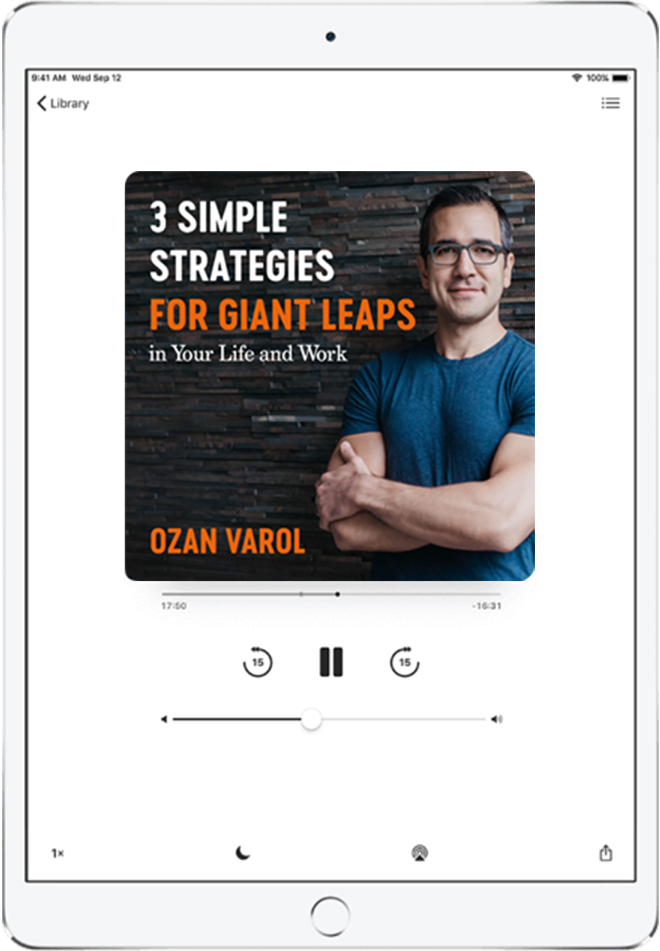Hospitals are supposed to nurse patients back to life.
But most hospital rooms do the opposite. They are featureless, soulless white rooms lit by headache-inducing fluorescent lights.
One healthcare organization set out to do something about this problem. They brought in the prestigious global design firm IDEO to redesign the patient experience. The hospital executives were probably expecting IDEO to deliver a stylish PowerPoint presentation with creative new designs for the hospital rooms.
Instead, what they got was a mind-numbing six-minute video clip. The video showed nothing but the ceiling of a hospital room. “When you lie in a hospital bed all day,” IDEO’s Chief Creative Officer Paul Bennett explained, “all you do is look at the roof, and it’s a really shitty experience.”
What Bennett describes as “a blinding glimpse of the bleeding obvious” came after IDEO employees put themselves in a patient’s shoes. An IDEO designer checked into the hospital as a patient and lay in an actual patient bed for hours, getting wheeled around, staring at the ceiling tiles, and capturing the abysmal experience on a video camera. The six-minute clip of the dull tiles was a small glimpse of the overall patient journey—a “mix of boredom and anxiety from feeling lost, uninformed, and out of control,” as IDEO’s CEO Tim Brown said.
Six minutes of footage was sufficient for the hospital employees to spring into action. They decorated the ceilings, put up whiteboards for visitors to leave messages to the patients, and transformed the style and color of the patient rooms to make them more personal. They also put rear-view mirrors on hospital stretchers to allow patients to see and connect with the doctors and nurses wheeling them around. IDEO’s presentation ultimately kickstarted a broader discussion to improve the overall patient experience so that patients were “treated less like objects to be positioned and allocated, and more like people in stress and pain,” Brown explained.
IDEO’s approach to redesigning the patient journey carries important lessons for us all. Everything we observe in the world is through our own eyes. In our professional lives, we look at our products and services from our perspective—not the perspective of our customers. In our personal lives, we refuse to make eye contact with people of different persuasions—let alone see the world through their eyes. As a result, it becomes exceedingly difficult to see someone else’s truth.
The solution doesn’t require a huge budget or enormous resources. You can follow IDEO’s lead and proverbially become a patient for the day. If you work at a sportswear company, walk a mile in your competitor’s shoes and ask yourself why some might rightfully choose to wear them over your brand. If you’re an airline executive, call the customer service line and endure the excruciating experience of pressing numerous buttons to escape the automated prompts, only to be rewarded by waiting on hold for 45 minutes. “If you want to improve a piece of software,” as IDEO’s founder David Kelley puts it, “watch people using it and see when they grimace.”
I could go on. If you’re a politician devising immigration policy, stay in a refugee camp overnight. If you’re a policymaker working on disability rights, put yourself in a wheelchair for an entire day. If you’re a Democrat, spend a weekend in Trump country (and vice versa), engage with the voters, and listen—really listen—with no agenda to persuade.
When we’re busy creating PowerPoint decks and organizational charts, when we’re lost in focus groups and survey results, it’s easy to forget there’s a human dimension to everything we do.
Empathy doesn’t require any grand gestures. All it takes is a desire to see the truth instead of the convenient and to feel what the other person feels for the briefest of moments.



